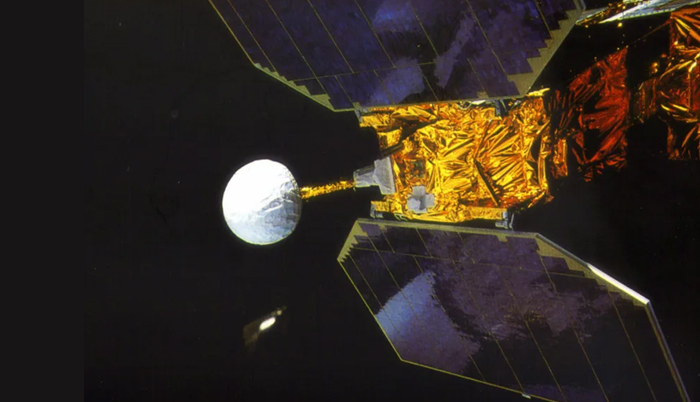![]() Home > Space & Science
Home > Space & Science
NASA's 38-Year-Old Science Satellite Falls Safely To Earth

NASA
![]() January 10th, 2023 | 10:29 AM |
January 10th, 2023 | 10:29 AM | ![]() 317 views
317 views
WASHINGTON, D.C., UNITED STATES
The reentry comes as officials hope to cut back on space debris.
NASA's 38-year-old dead satellite has returned to Earth without incident. The Defense Department has confirmed that the Earth Radiation Budget Satellite (ERBS) reentered the atmosphere off the Alaskan coast at 11:04PM Eastern on January 8th. There are no reports of damage or injuries, according to the Associated Press. That isn't surprising when NASA said there was a 1-in-9,400 chance of someone getting hurt, but it's notable when officials said there was a possibility of some parts surviving the plunge.
ERBS had a storied life. It travelled to aboard Space Shuttle Challenger in 1984, and pioneering woman astronaut Sally Ride placed it in orbit using the robotic Canadarm. Crewmate Kathryn Sullivan performed the first spacewalk by an American woman during that mission. The satellite was only expected to collect ozone data for two years, but was only retired in 2005 — over two decades later. The vehicle helped scientists understand how Earth absorbs and radiates solar energy.
You might not see much ancient equipment fall to Earth in coming decades. The FCC recently proposed a five-year cap on the operation of domestically owned satellites that aren't in geostationary orbits. The current guidelines suggest deorbiting within 25 years. While there could be waivers for exceptional cases, future satellites like ERBS (which was in a non-Sun synchronous orbit) might bow out long before they're reduced to space junk.
Source:
courtesy of ENGADGET
by Jon Fingas
If you have any stories or news that you would like to share with the global online community, please feel free to share it with us by contacting us directly at [email protected]